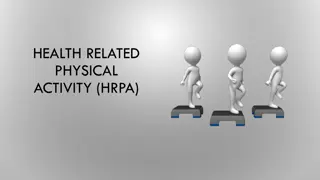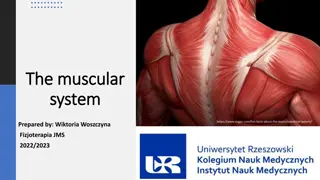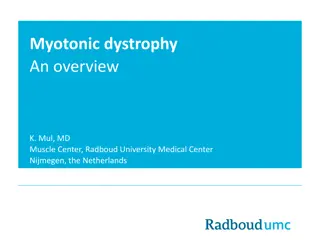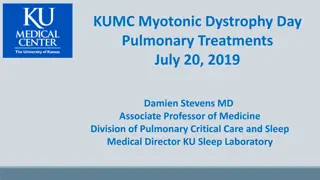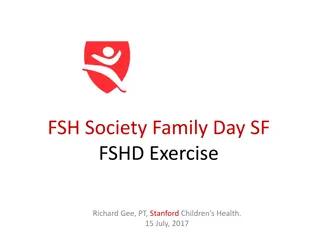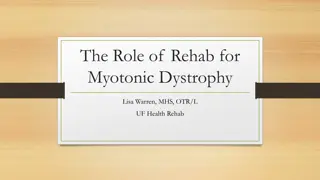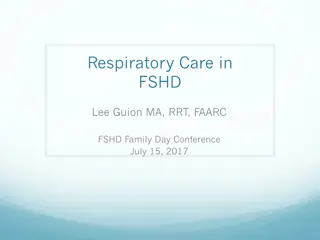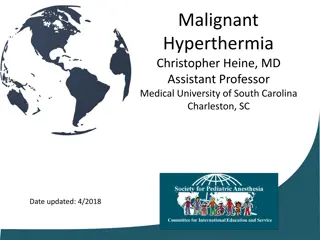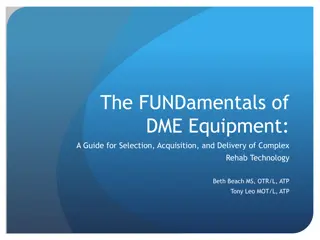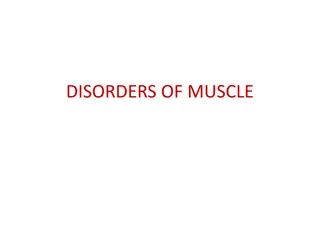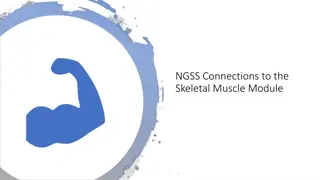Managing End-Stage Duchenne Muscular Dystrophy Care
This presentation discusses the complex care needs of John, a young man with end-stage Duchenne Muscular Dystrophy. It highlights the challenges faced by John and his caregivers, emphasizing the importance of a collaborative medical neighborhood approach to provide optimal care and support. The content covers John's medical history, current situation, and factors influencing his care. Strategies for addressing physical, psychological, and bureaucratic barriers to care are explored, demonstrating the value of a patient-centered approach.
Download Presentation

Please find below an Image/Link to download the presentation.
The content on the website is provided AS IS for your information and personal use only. It may not be sold, licensed, or shared on other websites without obtaining consent from the author.If you encounter any issues during the download, it is possible that the publisher has removed the file from their server.
You are allowed to download the files provided on this website for personal or commercial use, subject to the condition that they are used lawfully. All files are the property of their respective owners.
The content on the website is provided AS IS for your information and personal use only. It may not be sold, licensed, or shared on other websites without obtaining consent from the author.
E N D
Presentation Transcript
CAPSTONE PRESENTATION Presented by: Meg McMullin
Presentation Outline John, the patient in this case study, has end-stage Duchenne Muscular Dystrophy. He is now bedridden, has a trach, a feeding tube, is on a vent, and has several stage 4 pressure ulcers. He also is dealing with anxiety and depression. There are some gaps in the nursing care he receives due to John s decision to keep caregiver visits to a minimum. We have established a medical neighborhood for John and Mom, and they have contact information for everyone in it, including a phone number to his case worker and a nurse at Neighborhood Health Insurance
Patient Information John is a 28 year old male who lives at home with his Mom and Sister. He is cared for primarily by Mom. VNA provides nursing and cna care a few hours a week to mainly change dressings. An OT works with John at home once a week. John had a male nurse coming to the home 40 hours a week until mid March. John and Mom decided to stop the nursing care for now because they felt the nurse was making John do things he didn t want to do. They also felt it was a good time to limit people coming to the house due to the Corona Virus. John is now bedridden, in a tremendous amount of pain, and is on a lot of medication. He spends his time talking to friends, using devices, watching tv, movies and getting treatments/care. John is unable to work and is medically insured by Medicaid through Neighborhood Health.
Medical History John s chronic condition is Duchenne Muscular Dystrophy. He was diagnosed at age 5. The progression of the disease has caused him to be bedridden for about a year. He developed ulcers while at a long hospital stay. The ulcers are now stage 4 and require dressing changes that take 2-3 people to do. John can only tolerate these changes 2 times a week. He is on many medications for many different problems, several of which are for pain. Although the pain meds help, John is still in a lot of pain. John and Mom do understand the disease process, but how John feels and what he chooses on a daily basis sometimes trumps what would be advised medically.
Medical History John and Mom are somewhat compliant to the treatment regime. Due to severe pain, there is some push back on the frequency of dressing changes/wound care. At this stage, John s comfort is the priority and Mom helps make sure that his needs are met. Several bed ulcers have recently become acute, with most of them at stage 4, They are extremely painful and difficult to treat.
Matters For Consideration In this case, some barriers to care are physical -pain, psychological -anxiety and depression, and some barriers are bureaucratic hurdles with the insurance company. Thanks to everyone in the medical neighborhood, we together have finally reached the appropriate people at Neighborhood and have worked with them to give John the proper bed, pillow, supplies, equipment, and nursing care he needs and deserves. John and Mom jointly drive this case. John lets his Mom know his thoughts, opinions, and his wishes and she communicates them to us. We collaborate with everyone in John s medical neighborhood as need be -Mom, PCP, medical supply companies, psychiatrist, nursing agencies, VNA, nurses, OT, and insurance company
Plan To Address Concerns I plan to keep in touch with John s case worker and nurse at Neighborhood Health. I will also keep a check on appointments with specialist and work on transportation if need be. I will continue to call or text Mom regularly to check in and to encourage more nursing care once things calm down with covid. I will call the nursing agency that provides block nursing to see if they can send someone to work with John 20-30 hrs. week instead of 40 as John and Mom might agree to.
Plan Of Care Both Mom and John know to call us to report any major changes, especially if there s an increase in pain or swelling, breathing difficulty, any problems with equipment, and an increase in anxiety/depression.
Immediate Plan of Care My immediate plan of care is to keep John as comfortable as possible and make sure he s getting the attention, medical care, and equipment that he needs to continue with some quality of life with as little discomfort as possible.
Long Term Plan of Care My long-term plan for John is to get him into hospice care. I want him as comfortable as possible, and I hope he will eventually accept the help and guidance of the professionals that work in hospice care.


